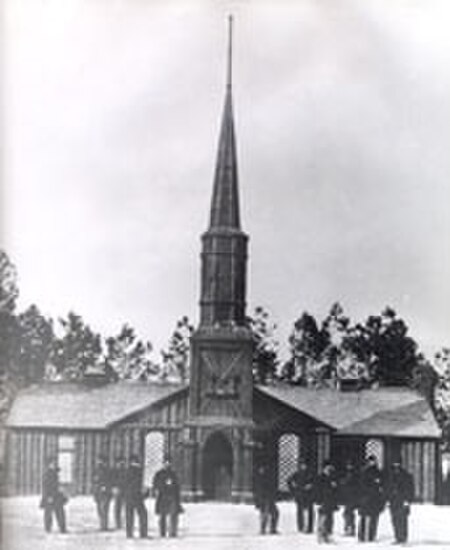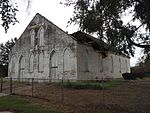The Third Battle of Petersburg, also known as the Breakthrough at Petersburg or the Fall of Petersburg, was fought on April 2, 1865, south and southwest Virginia in the area of Petersburg, Virginia, at the end of the 292-day Richmond–Petersburg Campaign (sometimes called the Siege of Petersburg) and in the beginning stage of the Appomattox Campaign near the conclusion of the American Civil War. The Union Army (Army of the Potomac, Army of the Shenandoah and Army of the James) under the overall command of General-in-Chief Lieutenant General Ulysses S. Grant, launched an assault on General Robert E. Lee's Confederate Army of Northern Virginia's Petersburg, Virginia trenches and fortifications after the Union victory at the Battle of Five Forks on April 1, 1865. As a result of that battle the Confederate right flank and rear were exposed. The remaining supply lines were cut and the Confederate defenders were reduced by over 10,000 men killed, wounded, taken prisoner or in flight.
The thinly held Confederate lines at Petersburg had been stretched to the breaking point by earlier Union movements that extended those lines beyond the ability of the Confederates to man them adequately and by desertions and casualties from recent battles. As the much larger Union forces assaulted the lines, desperate Confederate defenders held off the Union breakthrough long enough for Confederate government officials and most of the remaining Confederate army, including local defense forces and some Confederate Navy personnel, to flee Petersburg and the Confederate capital of Richmond, Virginia, during the night of April 2–3. Confederate corps commander Lieutenant General A.P. Hill was killed during the fighting.
Union soldiers occupied Richmond and Petersburg on April 3, 1865, but most of the Union Army pursued the Army of Northern Virginia until they surrounded it, forcing Robert E. Lee to surrender that army on April 9, 1865, after the Battle of Appomattox Court House, Virginia.









